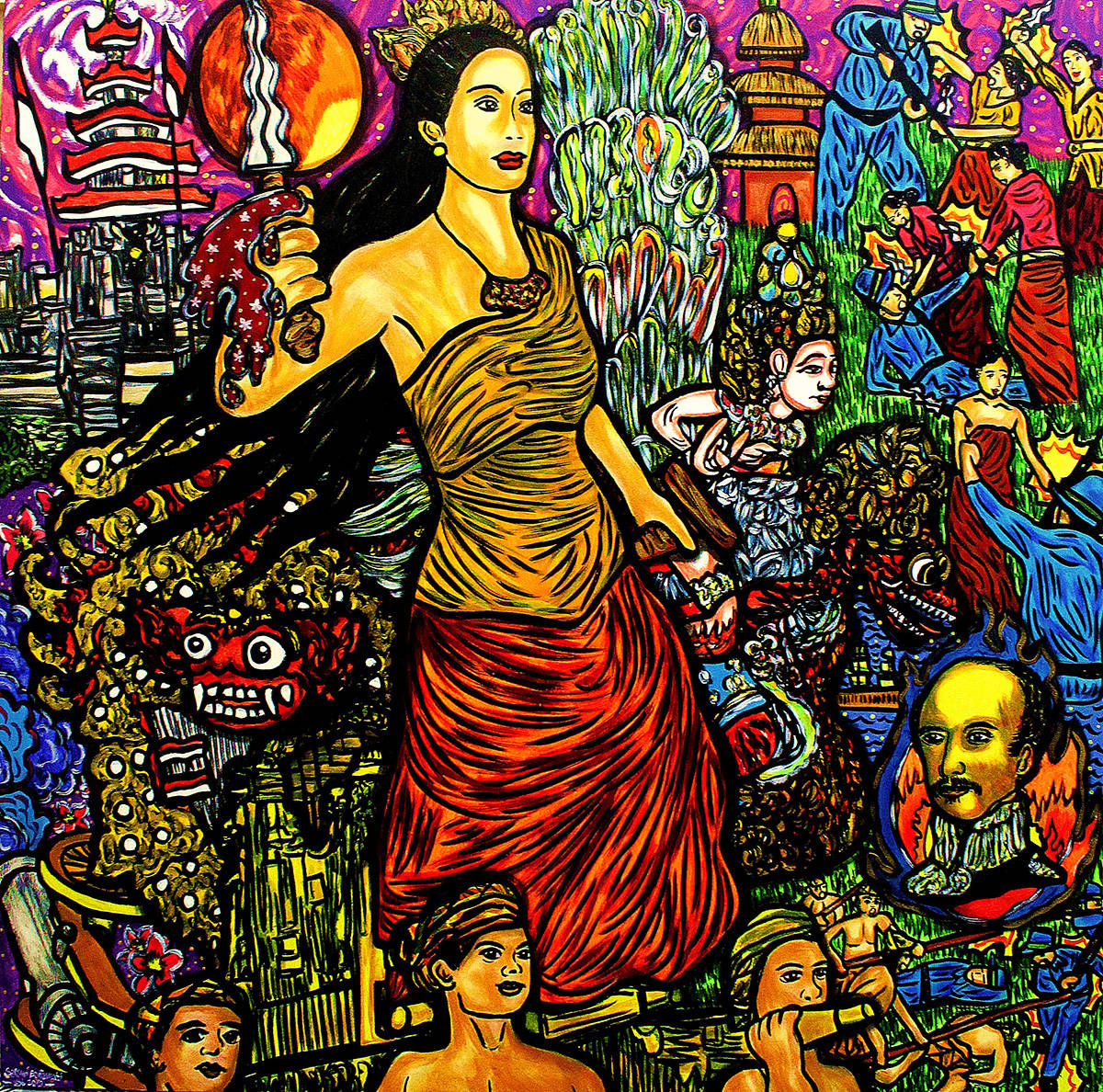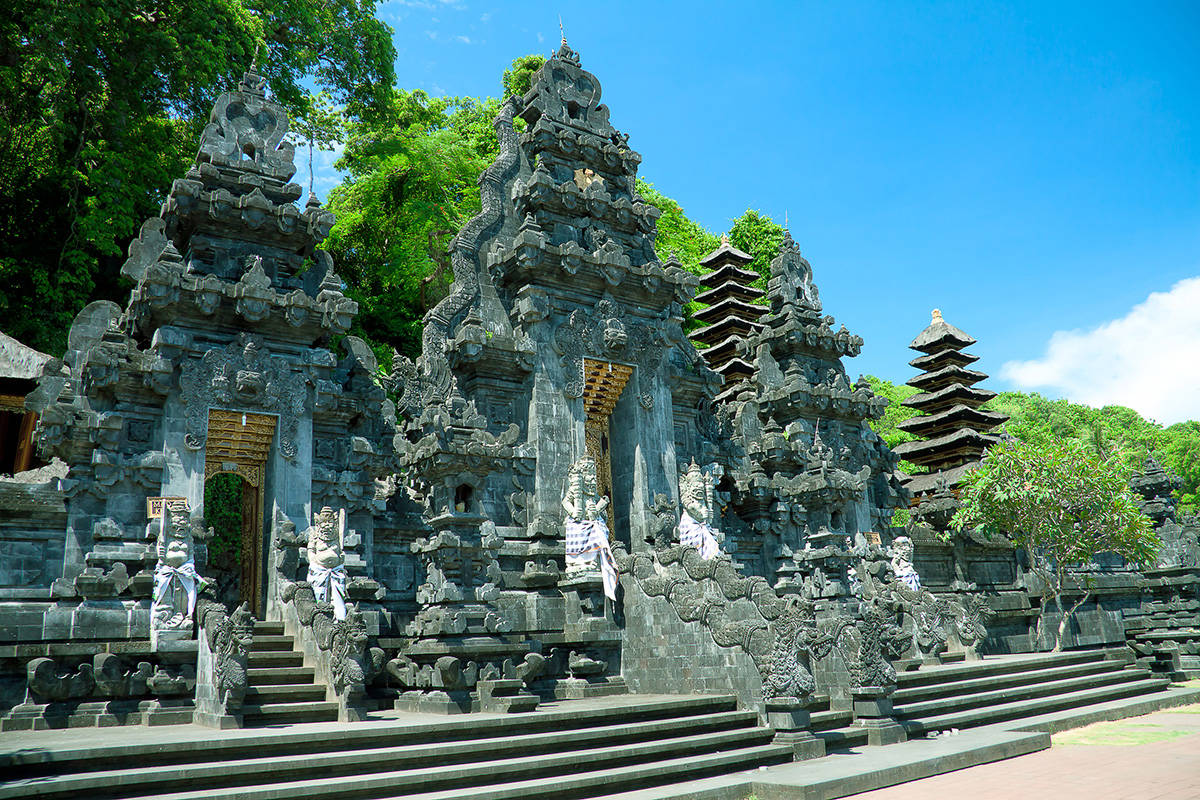Balinese dagger
The VR experience will take you to the temple of Goa Lawah, on the Indonesian island of Bali, in the aftermath of a battle. The kris on display was taken from an unknown warrior.
“Carried by someone of high rank, captured in Kasoemba”: thus read the 1851 description of this Balinese dagger in Berlin’s Ethnologisches Museum. The kris was part of a donation by Claus Rodenburg, a German collector who had worked for the Dutch colonial administration on the Indonesian islands of Sumatra and Java.
The conquest at ‘Kasoemba’ (the village of Kusamba) refers to the Third Bali War of 1849, often described euphemistically by Dutch sources as the ‘Third Bali Expedition’. This military campaign followed two earlier wars in the northern region of Bali. The supposed cause of the conflict was the plundering by the Balinese of Dutch ships that had run aground. The Netherlands used this incident as an excuse for an attempt to violently subject the whole island to Dutch rule.
Once the northern part of Bali had been taken, the Dutch army turned the focus of its ‘expedition’ to the southern kingdom of Klungkung. Troops left the coast at Padangbai and passed the Hindu temple complex of Goa Lawah, where they killed hundreds of Balinese people in battle.
At first the Balinese retreated, but they did not give up without a fight; a night-time ambush in the village of Kusamba left Dutch Major General Michiels fatally wounded and ended that phase of the war.
Klungkung held out until 1908 when, with much bloodshed, it was the last kingdom of Bali to become part of the colony of the Dutch East Indies.

Provenance
In 1851, the collector Claus Rodenburg gifted this kris to the King of Prussia, who included the dagger in his art chamber – a collection that would later become the Ethnological Museum of Berlin. The art chamber’s archives, which have been preserved, only reveal that the weapon was captured in Kusamba. The kris is thought to have been taken as war booty during the Battle of Goa Lawah. How Rodenburg obtained it remains unclear for now. We do know that he collected other weapons as well, including from islands he himself – as far as we know – had not visited. He may have bought these through middlemen, or in the bustling trading centre of Batavia (now Jakarta).
Magic bullet
While the Balinese often used krisses in their domestic conflicts, against the European enemy, heavier weapons were needed. When Dutch Major General Andreas Victor Michiels was ambushed, for example, he was killed not by a kris but by a bullet from a firearm, the I Seliksik. It was said that a bullet fired from this magical weapon always hit the enemy. The story goes that the sister of the King of Klungkung, Ida Dewa Agung Istri Kanya, was behind the nighttime ambush. She has since gained hero status in Bali.

Value
In Indonesia, krisses are not just viewed as weapons, but also as spiritual objects. As personal possessions, they are especially valuable to their original owners, who know their spiritual significance and history. The early provenance of the krisses that were captured in battle is often unknown. Today, museum collections contain many orphaned krisses whose deeper meaning has been lost to time. This kris has not been claimed by anyone – even the current King of Klungkung, Ida Dalem Semara Putra, has said that he does not want to assert ownership, possibly because the dagger has become meaningless.
Perspective
In the Netherlands, the end of the Kusamba War is generally not viewed as a defeat, and the focus is usually on the successful Battle of Goa Lawah. In Bali, on the other hand, the killing of Major General Michiels is seen as a victory over the Dutch.
Dutch history books have often repeated colonial terminology that masked the horrors of war. For instance, wars are commonly referred to as “expeditions”. In addition, the significance of the Balinese resistance has long been downplayed and misunderstood. In Klungkung, for example, the definitive end of the war came in 1908, when the entire royal family committed suicide in a ritual known as puputan. Western historians have interpreted this as an act of desperation, but in fact this Balinese tradition shows strength of will – a last defence of truth and justice.

